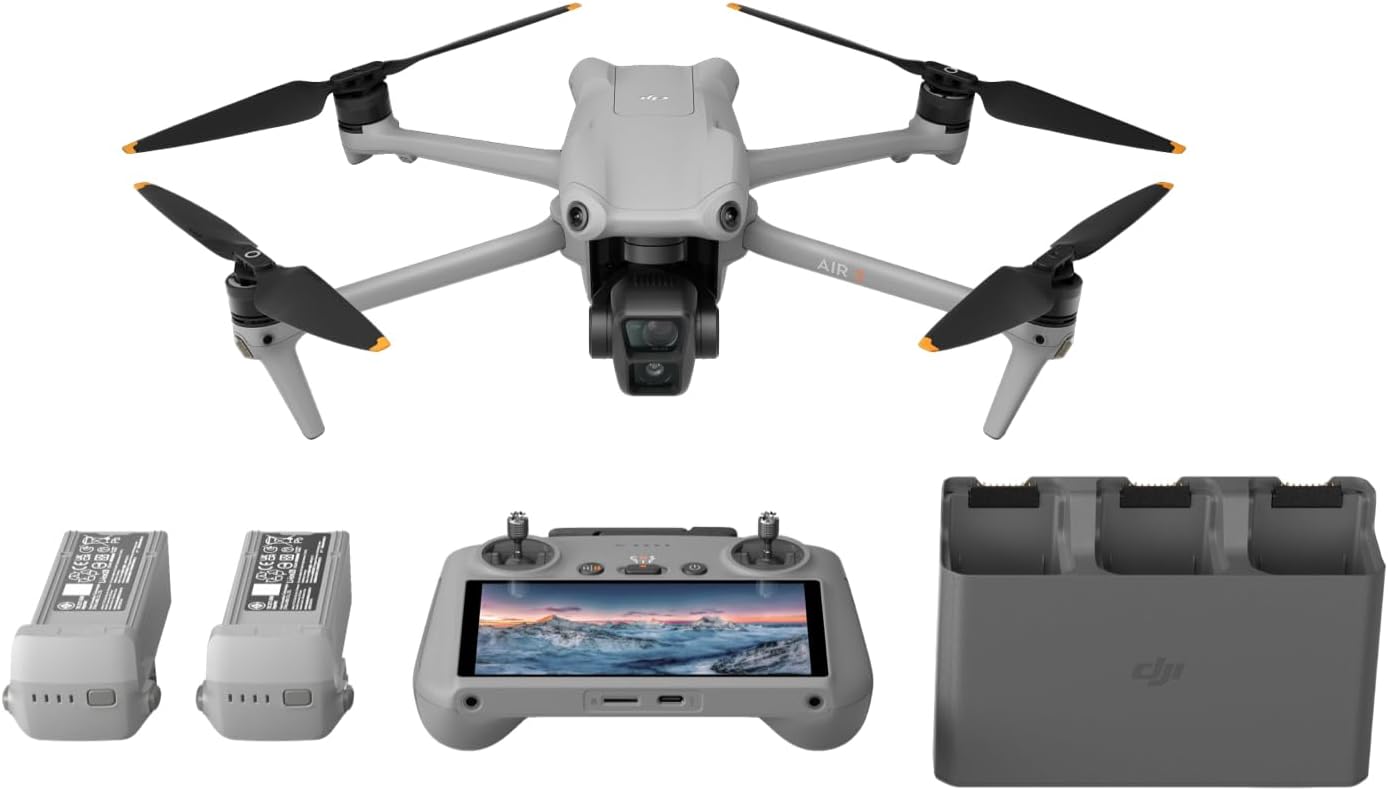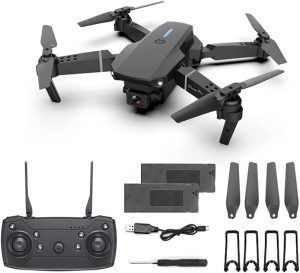Introducing the DJI Air 3, the latest addition to the Air series that takes aerial and camera technology to new heights. With its dual primary cameras, extended flight time, obstacle sensing capabilities, and advanced features, the Air 3 is a game-changer for creators and drone enthusiasts.
The DJI Air 3 comes packed with innovative technology and a sleek, foldable design. Whether you’re a beginner or an experienced pilot, this drone offers unrivaled performance and versatility at an affordable price point.
Capture breathtaking aerial shots with the medium tele and wide-angle dual primary cameras. The 24mm f/1.7 wide-angle lens and the 70mm f/2.8 medium tele lens provide a range of creative focal-length options. Take stunning 48MP photos with intricate details that allow for high-quality crops.
Not only does the Air 3 excel in photography, but it also delivers exceptional video quality. Both cameras support 4K/60fps HDR videos, enriching the footage with enhanced highlight and shadow details. Immerse yourself in the stunning visual information captured by this incredible drone.
Safety is paramount when flying a drone, and the Air 3 ensures a worry-free experience. With omnidirectional obstacle sensing, including front, back, left, right, and upward vision systems, as well as a downward vision system, you can confidently navigate any flight path. Avoid collisions and fly with peace of mind.
Experience extended flight time like never before. The Air 3 offers an impressive 46-minute max flight time, a 48% increase compared to its predecessor. This extended flight time gives you more freedom to explore the skies and unleash your creativity.
Stay connected with O4 HD video transmission technology. The six-antenna array significantly improves video transmission performance, providing a stable live feed in 1080p/60fps from up to 20 km away. Enjoy a smooth and immersive flight experience with a reliable and long-range connection.
The DJI Air 3 is available in three purchasing options to cater to your specific needs. The standard option includes the drone, DJI RC-N2 remote controller, and other essentials for new users. The Fly More Combo options include additional Intelligent Flight Batteries, a Battery Charging Hub, and the new DJI RC 2 remote controller with a bright touchscreen and pre-installed DJI Fly app for an exceptional operating experience.
Please ensure you comply with local laws and regulations before flying the DJI Air 3. Note that all data provided is tested using a production model in a controlled environment, and actual experience may vary.
Unleash your creativity and take your aerial photography and videography to the next level with the DJI Air 3. Experience the future of drone technology today.
Key Technical Specifications of DJI Air 3 (DJI RC-N2)
- Please check and strictly abide by local laws and regulations before flying. All data was tested using a production model DJI Air 3 in a controlled environment. Actual experience may vary depending on the environment, usage, and firmware version. All videos and images on this page were shot in strict compliance with relevant local laws and regulations. Before use, DJI Air 3 must be activated via the DJI Fly app.
Comparative Analysis: DJI Air 3 (DJI RC-N2) Drone
The DJI Air 3 (DJI RC-N2) drone is a versatile and powerful aerial photography and videography tool that offers a wide range of practical applications. Let’s compare it with similar products in the category to understand its competitive advantages and disadvantages.
1. DJI Air 3 vs. GoPro KarmaThe DJI Air 3 stands out with its medium tele and wide-angle dual primary cameras, which allow users to switch between different perspectives effortlessly. In comparison, the GoPro Karma offers a single wide-angle camera, limiting the creative possibilities for aerial content creation.
Advantage: DJI Air 3 has more versatile camera options for capturing stunning visual content.
2. DJI Air 3 vs. Yuneec Typhoon H ProThe DJI Air 3’s 46-minute maximum flight time gives it a significant edge over the Yuneec Typhoon H Pro, which offers only around 25 minutes of flight time. The longer flight time of the DJI Air 3 allows for extended exploration and data collection without the need for frequent battery changes.
Advantage: DJI Air 3 provides a considerably longer flight time for uninterrupted operations.
3. DJI Air 3 vs. Autel Robotics Evo IIOne of the standout features of the DJI Air 3 is its omnidirectional obstacle sensing, which enhances safety during flight and enables precise navigation even in complex environments. While the Autel Robotics Evo II also offers obstacle avoidance, it doesn’t provide the same level of coverage as the DJI Air 3’s advanced sensing system.
Advantage: DJI Air 3 offers superior obstacle sensing capabilities for enhanced flight safety.
4. DJI Air 3 vs. Parrot AnafiThe DJI Air 3’s 48MP photos and 4K/60fps HDR video capabilities set it apart from the Parrot Anafi, which offers lower resolution imagery. The DJI Air 3’s high-quality imagery allows for more detailed visual content and better post-processing flexibility.
Advantage: DJI Air 3 provides higher-resolution photos and videos for professional-grade content creation.
5. DJI Air 3 vs. PowerVision PowerEgg XWhile the PowerVision PowerEgg X offers similar aerial photography and videography features, the DJI Air 3’s up to 20km video transmission range surpasses the PowerEgg X’s capabilities. The extended video transmission range of the DJI Air 3 enables users to capture footage from greater distances, expanding the range of applications.
Advantage: DJI Air 3 offers a significantly longer video transmission range for extended operational flexibility.
Conclusion:The DJI Air 3 (DJI RC-N2) drone’s competitive advantages include its versatile camera options, longer flight time, advanced obstacle sensing, high-resolution imagery, and extended video transmission range. These features make it a top choice for professionals and hobbyists in various industries, such as aerial photography, real estate marketing, search and rescue operations, environmental surveying, infrastructure inspection, event coverage, agricultural monitoring, wildlife conservation, film production, and travel documentation.
Pros
- Versatile camera options for capturing stunning visual content
- Longer flight time for uninterrupted operations
- Advanced obstacle sensing for enhanced flight safety
- Higher-resolution photos and videos for professional-grade content creation
- Significantly longer video transmission range for extended operational flexibility
Cons
- No cons found in the comparative analysis

